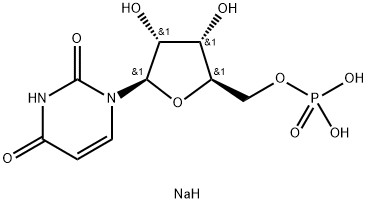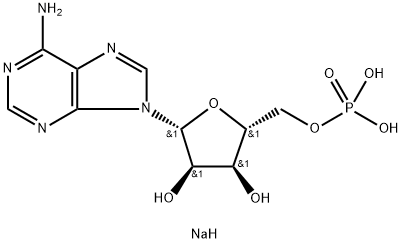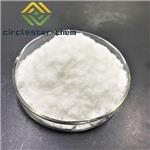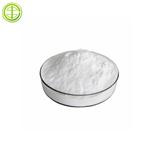Chemical Properties
Crystalline
Chemical Properties
The protonation of disodium uridine-5'-monophosphate (UMP) and cytidine 5' -monophosphate (a homolog of UMP) not only depend on the electrostatic forces but also strongly depend on the solute–solvent interactions of the different species in the mixtures. In the case of UMP, the correlation analysis of log10 K2 and log10 K1 (including β and π*) shows the polarity parameter has a major role (about 58 and 56 %, respectively) and the negative sign of π* and positive sign of β indicate that a decrease in the polarity of the media increases the protonation constants[1].
Uses
Uridine 5′-monophosphate disodium salt has been used to study the effect of pyrimidine synthesis inhibitor, 5-azacytidine, on cholesterol and lipid metabolism. It has been used to study the effect of nucleotides on growth of specific intestinal bacteria.
Uses
Uridine 5’-Monophosphate Disodium Salt is a derivative of Uridine (U829910) which is a major ribonucleic acid.
Uses
A nucleotide that is a major component of ribonucleic acid. It is found in dietary supplements as well as natural RNA rich foods and has been shown to increase cognitive function in animals.
Application
Uridine 5′-monophosphate disodium salt can be used as a cross-linking agent to prepare thermosensitive chitosan hydrogels containing graphene oxide as nanofillers. The hydrogels are attractive materials for use as scaffolds for the regeneration of damaged tissues[3].
benefits
Membrane phospholipids like phosphatidylcholine (PC) are required for cellular growth and repair, specifically for synaptic function. PC synthesis is controlled by cellular levels of its precursor, cytidine-5'-diphosphate choline (CDP-choline), which is produced from cytidine triphosphate (CTP) and phosphocholine. In rat PC12 cells, exogenous uridine was shown to elevate intracellular CDP-choline levels by promoting the synthesis of uridine triphosphate (UTP), which was partly converted to CTP. In such cells, uridine also enhances the neurite outgrowth produced by the nerve growth factor (NGF). A study assessed the effect of dietary supplementation with uridine-5'-monophosphate disodium (UMP-2Na+, an additive in infant milk formulas) on striatal dopamine (DA) release in aged rats. Potassium (K+)-evoked DA release was significantly greater among UMP-treated rats, i.e., 341+/-21% of basal levels vs. 283+/-9% of basal levels in control rats (p<0.05); basal DA release was unchanged. The levels of neurofilament-70 and neurofilament-M proteins, biomarkers of neurite outgrowth, increased to 182+/-25% (p<0.05) and 221+/-34% (p<0.01) of control values, respectively, with UMP consumption. Hence, UMP treatment not only enhances membrane phosphatide production but also can modulate two membrane-dependent processes, neurotransmitter release and neurite outgrowth, in vivo[2].
General Description
Uridine 5′-monophosphate is a pyrimidine mononucleotide. It is formed by decarboxylation of orotidine 5′-monophosphate. UMP is further converted to UTP (uridine 5′-triphosphate) using kinases.
References
[1] Soleimani, Farahnaz, and F. Gharib. "Protonation Constants of Uridine 5′-Monophosphate in Different Aqueous Solutions of Methanol."
Journal of Solution Chemistry 43.4(2014):763-773.
[2] Lei Wang. “Dietary uridine-5′-monophosphate supplementation increases potassium-evoked dopamine release and promotes neurite outgrowth in aged rats.” Journal of Molecular Neuroscience 27 1 (2005): 137–145.
[3] KATARZYNA PIEKLARZ. Nanoarchitectonics and Biological Properties of Nanocomposite Thermosensitive Chitosan Hydrogels Obtained with the Use of Uridine 5’-Monophosphate Disodium Salt.[J]. International Journal of Molecular Sciences, 2024. DOI:10.3390/ijms25115989.





